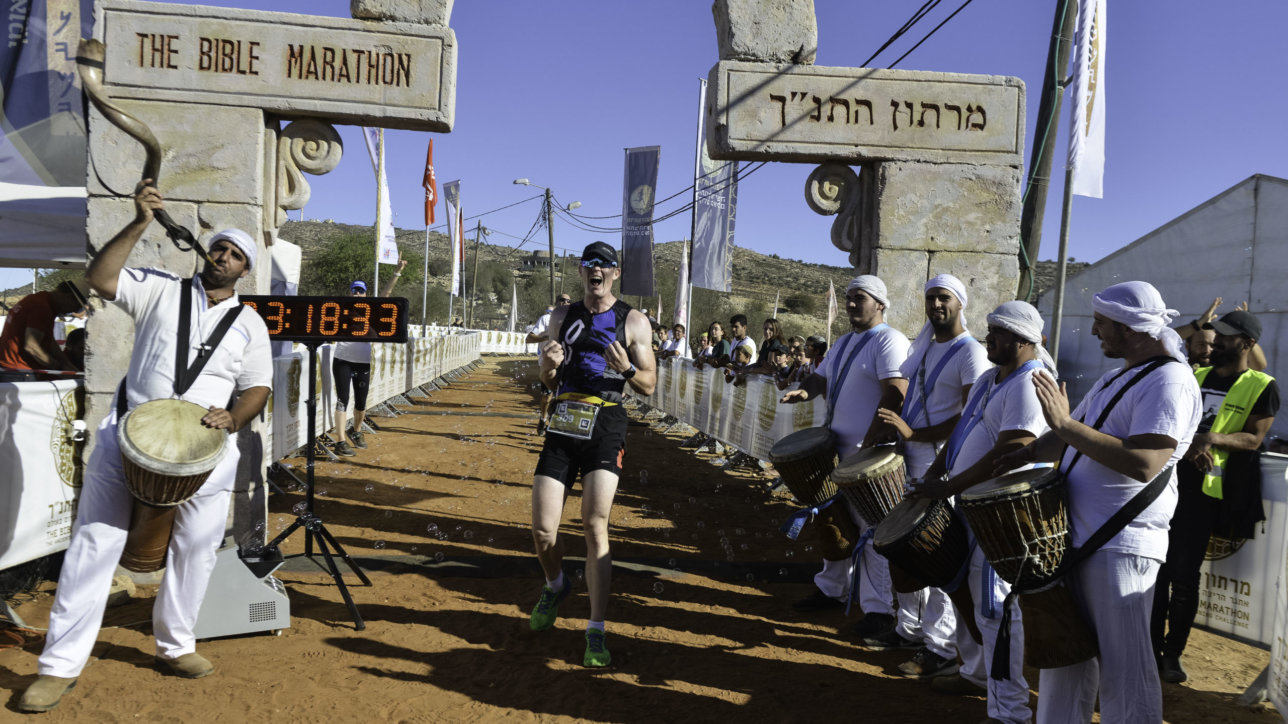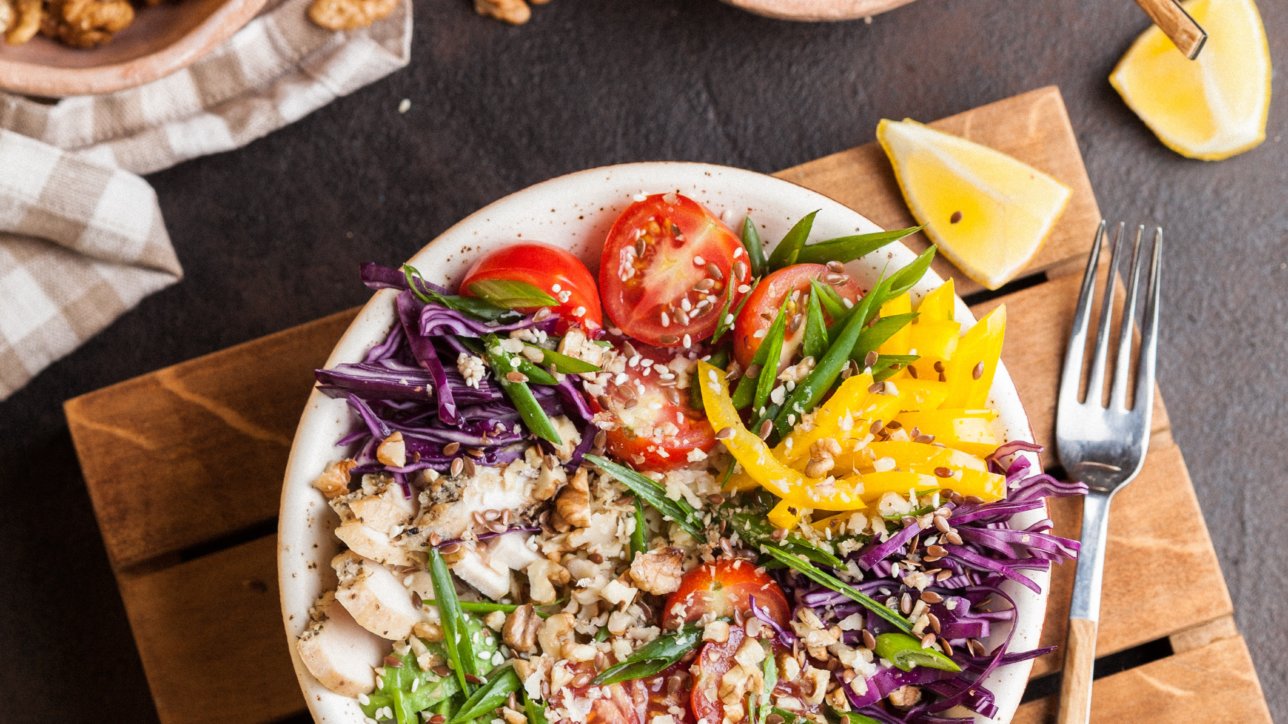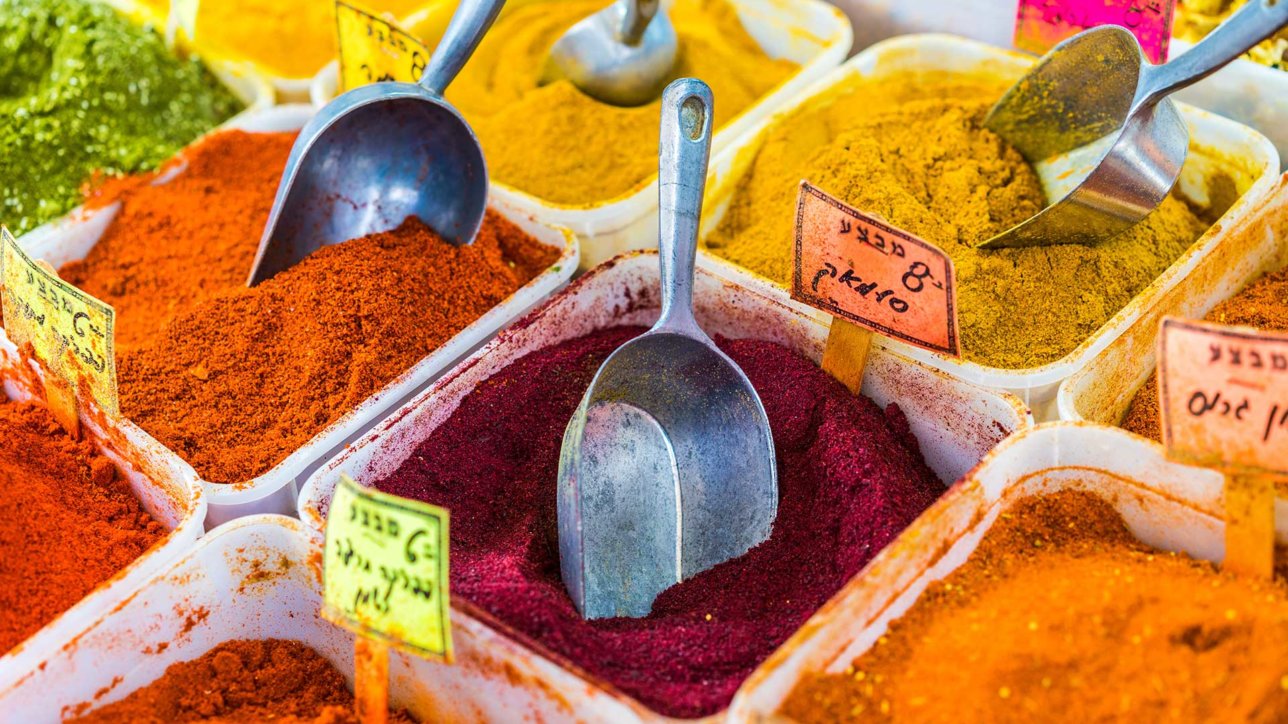Sachlav, as an official partner of Marathon Israel, is offering a special deal for Bible Marathon participants which includes a week long tour of Israel.
Israeli Food: A Smorgasbord of Flavors
Israel is a country made up of diverse communities that arrived here over the past century from western and eastern Europe, Morocco, Yemen, India, Ethiopia, and just about everywhere Jews settled during our 2000 year wandering. Those traditions met local Arab influenced dishes in Israel and the result is diverse, wonderful food – you like it, you can find it! From Sushi to Pasta; Hummus to Pizza, we have it all – As well as familiar Europane / American style dishes, there’s a strong Mediterranean and North African flavor to a lot of Israeli food and you’ll find that reflected everywhere from street food vendors to high price restaurants.
One difference to American eateries you’ll probably notice, is that influenced by Kosher dietary laws, many places serve either meat or milk dishes, so getting pepperoni on your pizza may be a struggle, but that won’t affect the variety and quality of food on offer for Israelonthehouse participants to try: On every high street you’ll find pizza shops, as well as Shawarma (rotisserie roasted meat) and falafel (deep fried chick pea balls), both of which are sold in Pita bread, filled to overflowing with salads of your choice…delicious, filling and inexpensive! Another popular Israeli street food is “shipudim” better known as Kababs and of course burgers and fries are always there for the less adventurous.
Israel is a nation of coffee shops. In the past these were Italian style patisseries, where customers would sit outside with a newspaper, or perhaps a backgammon set (known locally as shesh-besh) while the world walked past. Today these still exist, but most have gone a bit more modern. Although there’s no Starbucks in Israel, there are large local chains everywhere serving latte’s and mocha cappuccino’s with croissants. Breakfast in Israel involves salads, cheeses, yogurts, eggs, bagels, croissants and awesome Israeli bread which for some unknown reason is of an exceptionally high standard!
There’s no doubt that Shabbat and Jewish holidays bring out the best in Israeli home cooking. Every community has its traditional dishes from Polish cholent to Yemenite Chamim – its all good! My advice is don’t be shy – try it all!
Even the pickiest of eaters find something delicious to enjoy in Israel! So go out and enjoy all the different flavors that Israel has to offer! B’tayavon (Bon Appetite)
Israel’s Wineries: A Fine Taste of Israel
Wine was always part of life in ancient Israel, mentioned many times in the bible. Indeed wine is part of Judaism itself: it is used to begin and end Shabbat (Sabbath) and is an integral part of the Passover meal and Purim celebrations. There is a widely held belief that the Crusaders brought Chardonnay grapes back to France from the Holy Land (Chardonnay possibly derived from the Hebrew Shah Ad-onay, or gates of G-d) .
In modern times, the wine industry was started in the late 1800s by Baron Edmond James de Rothschild, owner of the Bordeaux estate Château Lafite-Rothschild. Today, Israeli wine-making takes place in several areas of Israel, where the cool, semi arid conditions in winter are ideal for growing grapes. The range of wines produced in Israel increases annually and the quality is unarguable, as more and more Israeli wines win international awards.
Israel’s excellent wineries include larger businesses such as Golan, Tishbi, Barkan, Yarden, and Binyamina, as well as dozens of smaller boutique wineries. Most are Kosher although some, particularly those run by monasteries in the Judean hills, may not be. Many of the wineries have visitor centers and offer site tours and tastings, some of them take this to a very high level. Tishbi for example, which is a few minutes drive from the Roman city of Caesaria and the modern Israeli town of Zichron Yaakov, has a restaurant with an open-plan bakery producing sour dough breads where I’ve enjoyed several fine lunches. It offers comprehensive and enjoyable tours which end in wine tasting sessions (spitting optional!).
Whichever winery you visit, you’ll need to book your tour in advance and confirm they have an English speaking guide available at the times you wish to visit.
It is not rare for groups to spend a day or more touring just Israels wineries, and this can really be an interesting experience. Even if your group decides one winery is enough for them, this should definitely be on your itinerary. The range of options of wineries, from small to large; with or without restaurants and geographically locations ranging from near Jerusalem, in the Negev, in the Galil or in the Golan, means that this should be something you can easily slot into your schedule.
Enjoy the wonderful wine scene throughout all of Israel! We know you will love it. LeChaim!!
Mahane Yehuda Market: The Ultimate Shopping Experience
The first time we went to Machane Yehuda, Jerusalem’s bustling traditional market, was on our family trip to Israel several years ago. Getting there was a bit of a nightmare back then, even though our hotel was almost within walking distance. As the kids were young we decided to take the bus, which we thought would give a more authentic experience than a cab, and perhaps in a way it did. Nobody thought it worthy to mention to us that the lite railway project (which had apparently been going on since King Solomon’s day) turned what should have been short bus rides into epic journeys. When we eventually got off the bus, older, but not really much wiser, the market was indeed “as advertised” – a colorful bustling traditional “shuk” with rows of vegetables, interspaced with occasional meat, fish, clothing and hardware stalls. Spices piled high in hessian bags delighted my kids who sniffed and sneezed over everything. A gentleman in a cardboard crown informed us he was the King of Halva as he gave us a taste of his wonderful product, which did confirm his royal status, in our minds at least. Jerusalemites shop at the shuk and it’s a great place to get a feel for the ethnic & cultural diversity of this ancient/modern city – old ladies pushed past us with their shopping bags on wheels which doubled as battering rams; Ultra-Orthodox men (trying hard not to notice my wife) mingled with Israeli Arabs, school kids & young soldiers taking a short cut through the shuk – Machane Yehuda is a microcosm of Israeli society and like Israel in general, it’s a crazy wonderful place!
My 9 year old son loved the shouting store holders who yelled prices at each other – apparently there was a strawberry price war the day we went – They’d yell “Chamaish Shekel” (5 shekels) and he’d yell back “One Dollar” in as loud a voice as his squeaky soprano vocal chords could muster – I think the merchants were generally impressed by his squeals and he gathered quite a few samples to taste. Sadly at that time nothing went in his mouth that wasn’t on his very short approved list! We found that if we lingered to peer at a dried fruit display or rack of alien looking fruits, the vendor seemed to accept this as a firm guarantee of a sale. Eventually we exited the shuk with the addition of a bag of dried figs, a huge container of mixed candy, and a metal “Chamsa” key chain a merchant assured us would bring luck. As this was lost somewhere in our hotel within a day, I’m not sure it lived up to the hype!
When we returned to Israel last summer, we knew we also had to return to Machane Yehuda – if only because my son’s voice has long since deepened into a satisfying bass and he was itching to yell at the merchants again. Things have certainly changed: for one thing the lite rail is finally finished thanks apparently to a new mayor since our last visit. We hopped on this efficient, clean transport system, which whipped us through the newly pedestrianized & revitalized Jerusalem center and onto the Shuk in minutes.
As we’d already sampled Machane Yehuda’s atmosphere on our original visit, we’d aimed for a deeper experience this time and we’d spoken to our tour company (Ultimate Israel) in advance about a personal tour of Machane Yehuda. It turned out to be a great idea, and one we’d recommend to all shuk tourists! Our guide seemed to be closely related to most of the stall holders, who greeted him with yelling and puffs of cigarette smoke which we took to be a bonding custom similar to Native American peace pipes. It did seem harder after being introduced by our guide to refuse the many offers of fruit and vegetables, and we quickly learned that “no” means “probably yes” unless you are really firm. That said we still ended our shuk experience heavily laden with fruits and spices we had absolutely no need for, not to mention a new “Chamsa” key ring the hawker assured us would bring “parnasa” (livelihood), but as the shuk visit left us considerably poorer in money (although richer in produce), I’m not sure that this new charm worked any better than the original.
Having a guide opens up the history of the place and the many cultures that live, work and shop in Machane Yehuda – he took us to a quiet corner inhabited by elderly Moroccan Jews intently playing backgammon games, which reminded me of the old Chinese men in San Francisco parks playing Chinese checkers. He pointed out unusual wares for sale, and told us which vendors offered the best deals, and even some tips on getting the best for less.
After our tour we went to a covered street in the market that has been gentrified over the last few years, and is today more tiny café’s, street food and Jewelers than vegetables. There you can feast on delicious and inexpensive pasta served in Chinese take away boxes, or perfect Fish & Chips that even an Englishman would respect. We found a Tapas bar, and burger stand as well as mini coffee shops and of course the ubiquitous falafel stands.
Don’t program less than two hours at Machane Yehuda and don’t forget your camera because the place is a photographer’s shmorgas board. I’d also recommend you go there a little hungry, because I can almost guarantee you won’t leave that way. Whatever else you do in Israel, the Shuk is a must!




